

Bled Island
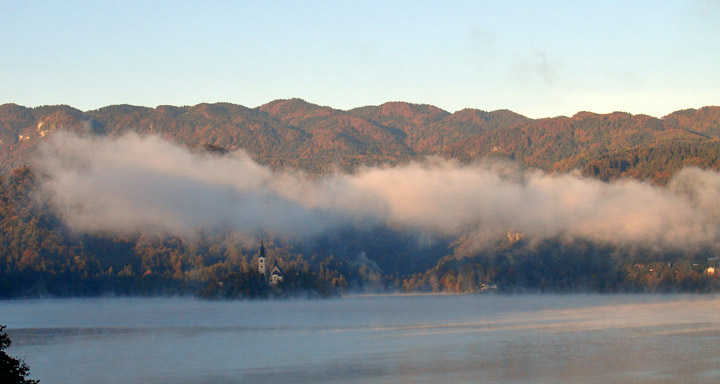
Lake Bled Island in the morning mist
The island in the middle of Lake Bled is without doubt one of the premier attractions of the area, which surprises and charms every visitor. It is verdant with greenery up to and including the buildings themselves. Many legends exist connected to the island, one of which is described in the masterpiece of the finest Slovene poet France Prešeren. The legend relates that a temple used to stand on the island, dedicated to Živa, the Slavic goddess of love, and protected by Bogomila and Staroslav.

St. Mary of the Assumption.
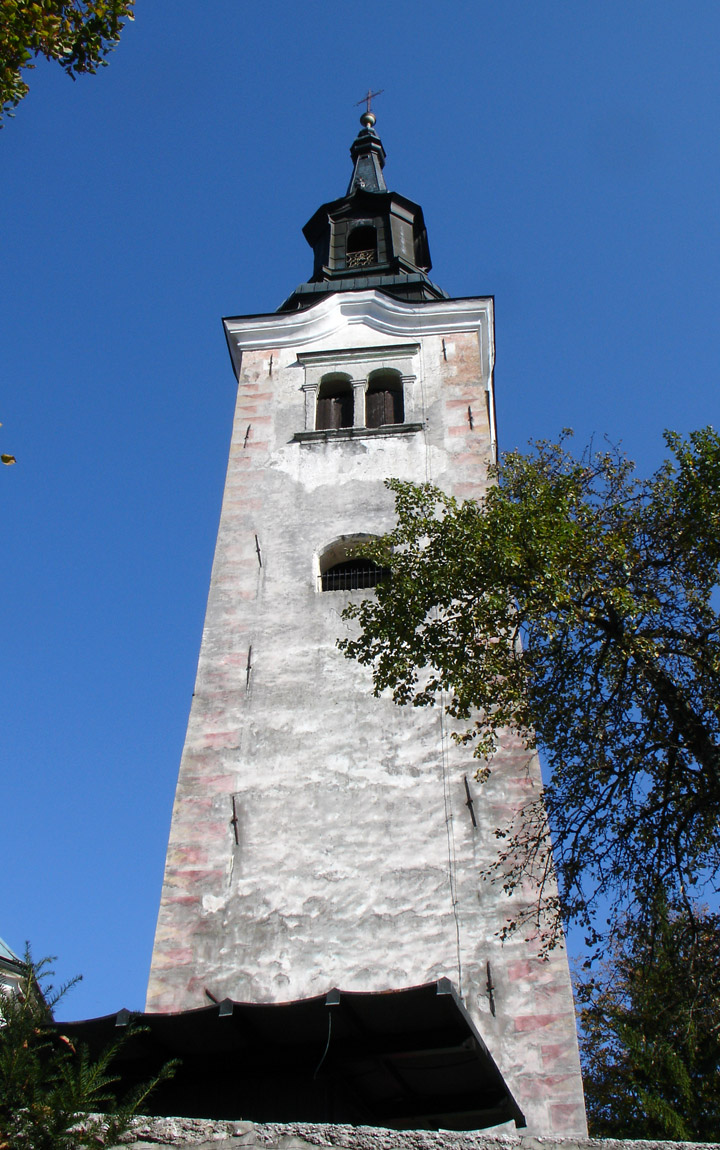
church towerer
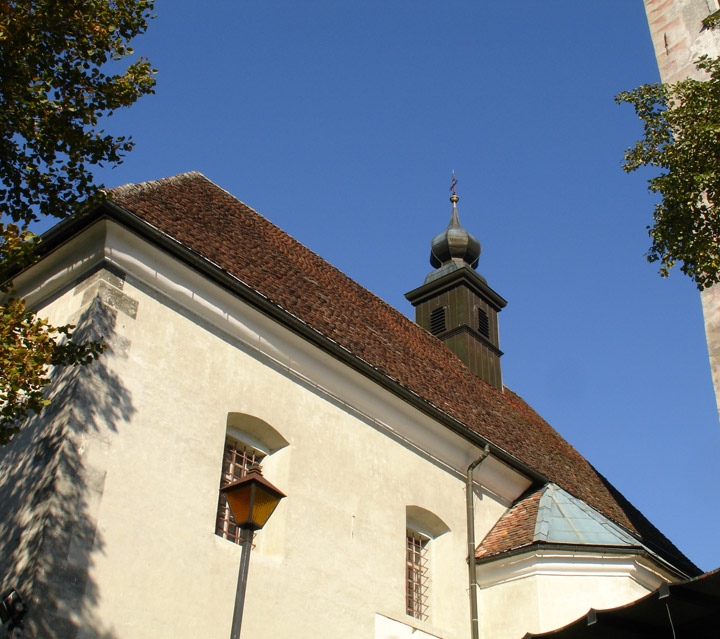
smaller bell towerer
The single-nave Gothic church with its large free-standing belfry was built on the southern side in 1465, when Sigmund Lamberg, the first Bishop of Ljubljana consecrated the new presbytery and the main altar.
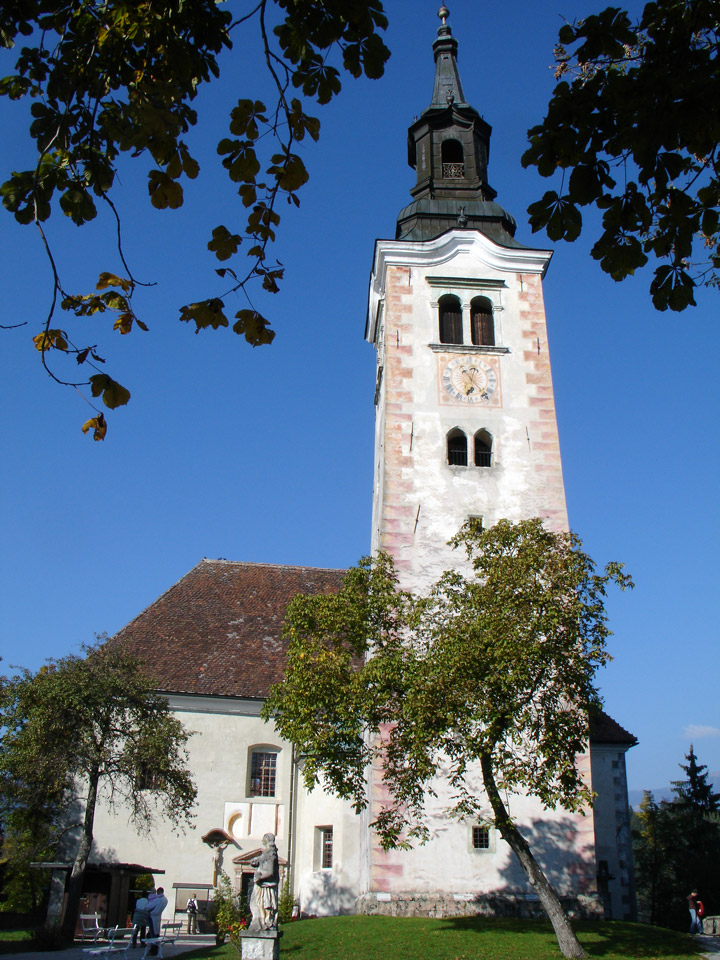
The free-standing belfry is a special feature, as it shows the typical influence
of the Venetian school. The belfry is 52 m in height and is characterized by its
Gothic arch above the entrance, which was built in the 14th to 15th centuries
from stone known as buckwheat grain due to its numerous holes.

free-standing belfry
On the site of the Gothic church a Pre-Baroque church was built in the middle of the 17th century, and then reconstructed in 1685. The three side altars made of black marble are the work of the Ljubljana stonemasons M. Cusse and F. Ferrata. The images by an unknown master reflect the Venetian school of the 17th century. The fourth side altar, dedicated to St. Ana dates from the end of the 17th century, and the image within it is from the Layer workshop in Kranj. The Baroque main altar has richly gilded carvings and dates from the 1740’s. The altar sculptures represent the donors of the Bled lands, Emperor Henry II and his wife Kunigunda. The wooden reliefs on the altar table and the tabernacle are from the second half of the 19th century. The church was renovated in 1972.

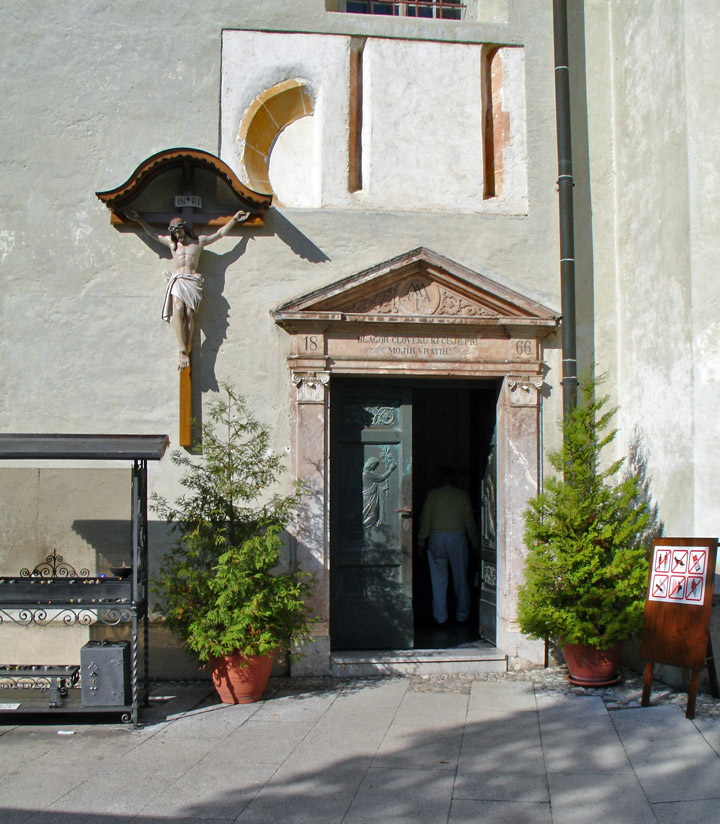
church entrance
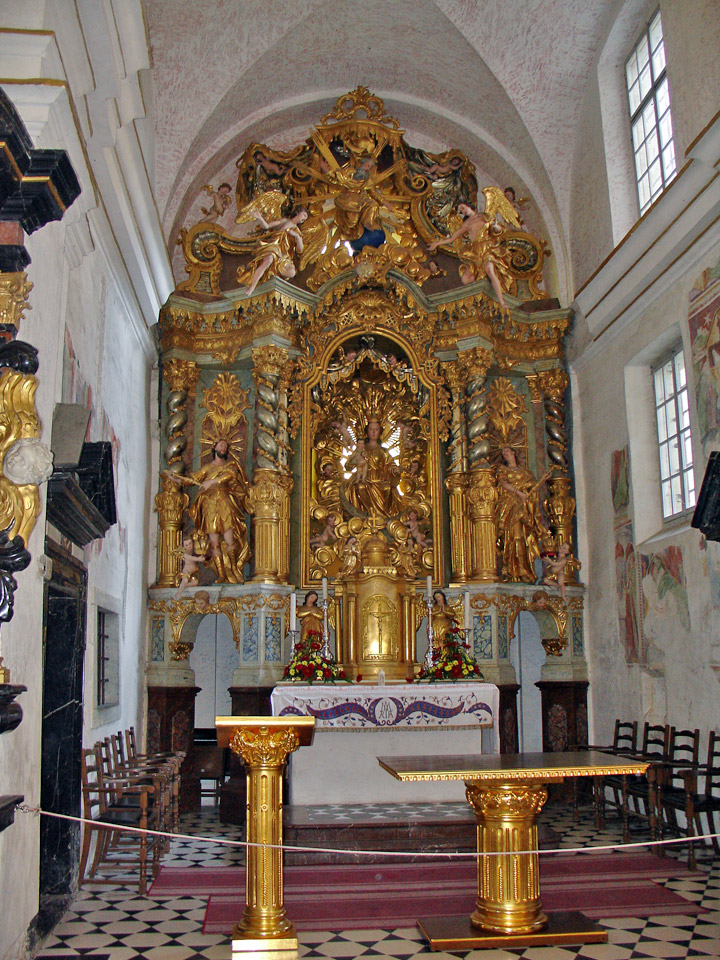
altar
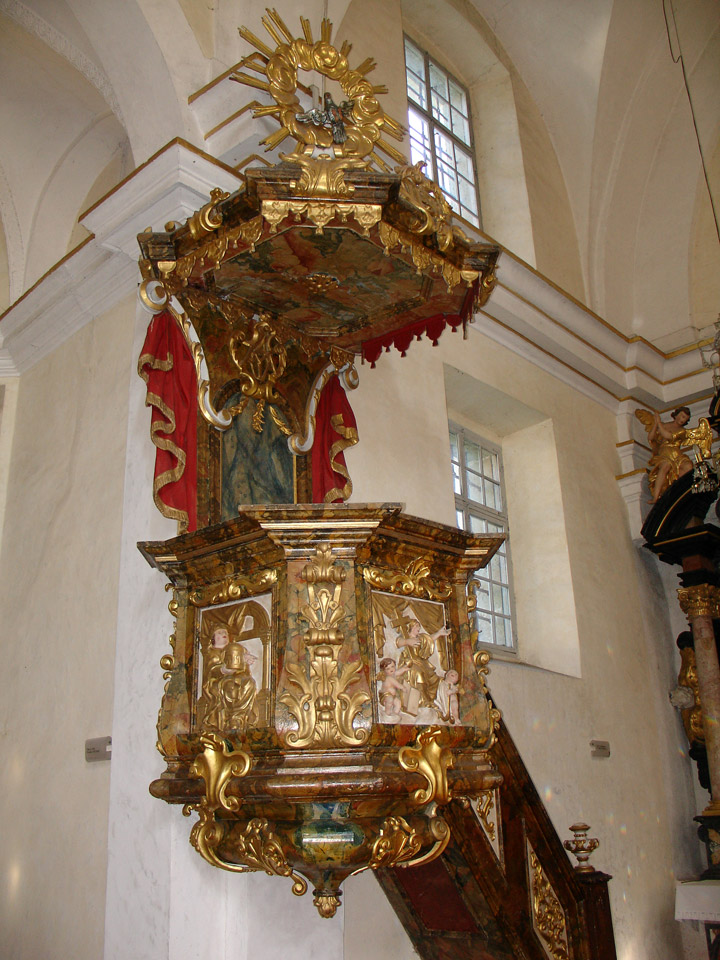
pulpit

children ringing the bell
A special feature of the island church is the wishing bell, which attracts many tourists. It was manufactured in Padova in 1534. The bells in the belfry date from the first half of the 18th century. The other buildings and the protective walls were finally completed in the 17th century.
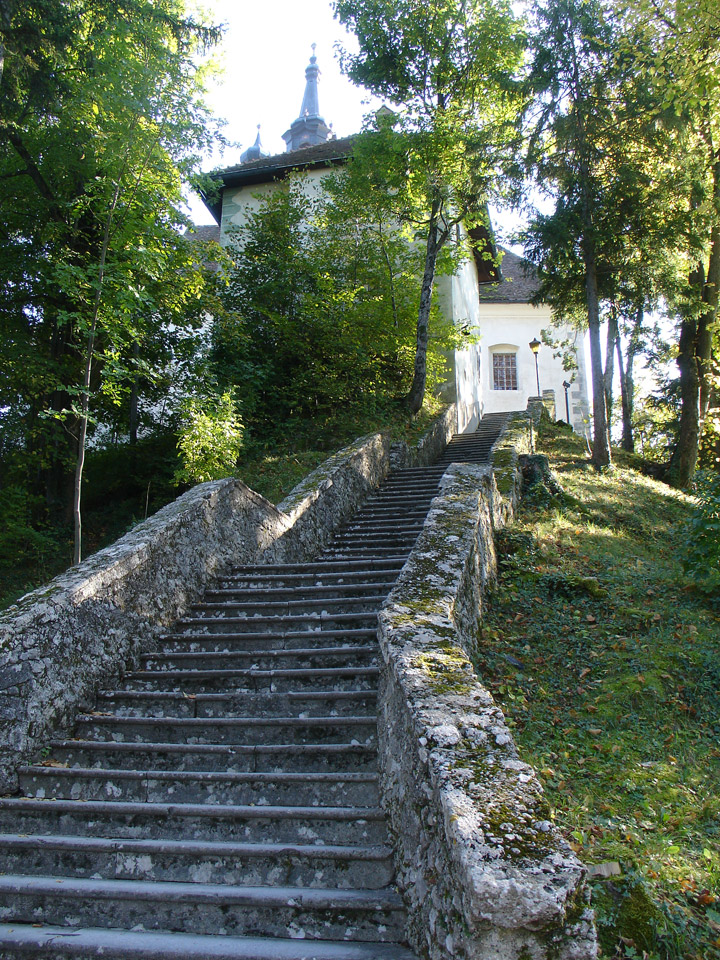
steps up to the church
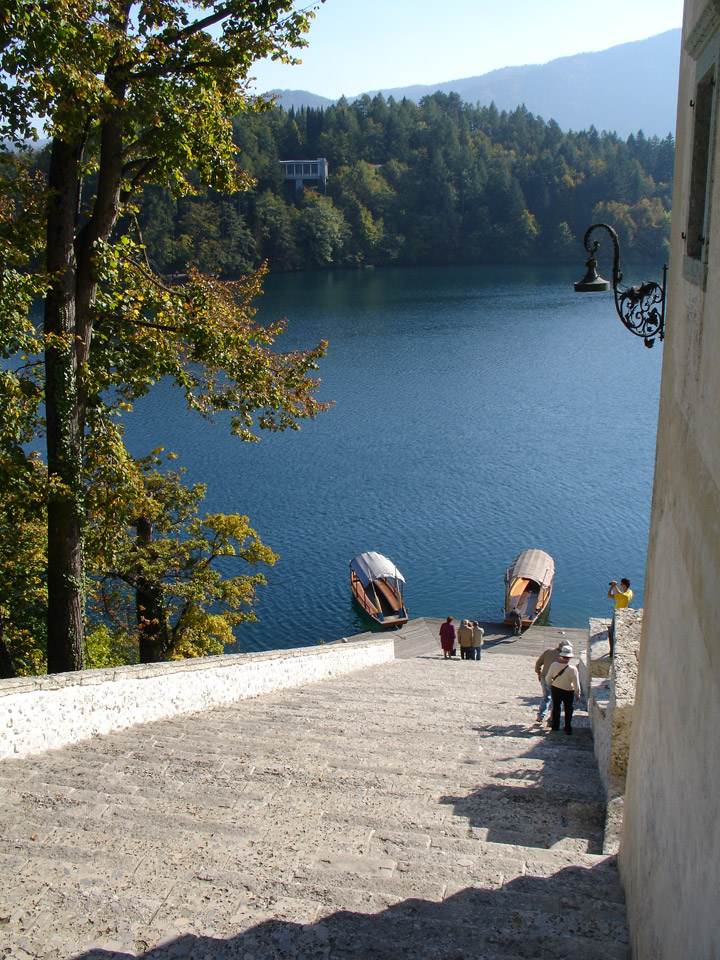
long way down to the boats
The monumental staircase with 99 stone steps leading to the top of the island was built in 1655. It remains traditional at weddings on the island that the groom should carry his bride up all 99 steps.
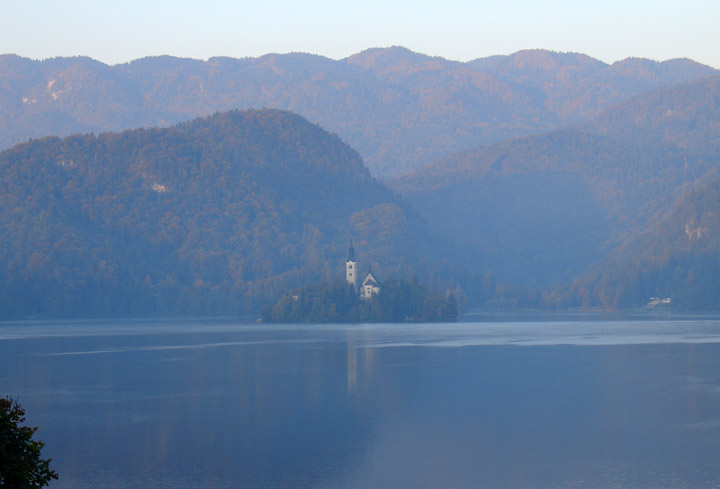
Bled Island at twilight
A well was constructed on the island in 1888, commissioned by Windischgraetz to the memory of a princess who had died at an early age. The water comes from a natural spring and is drinkable.
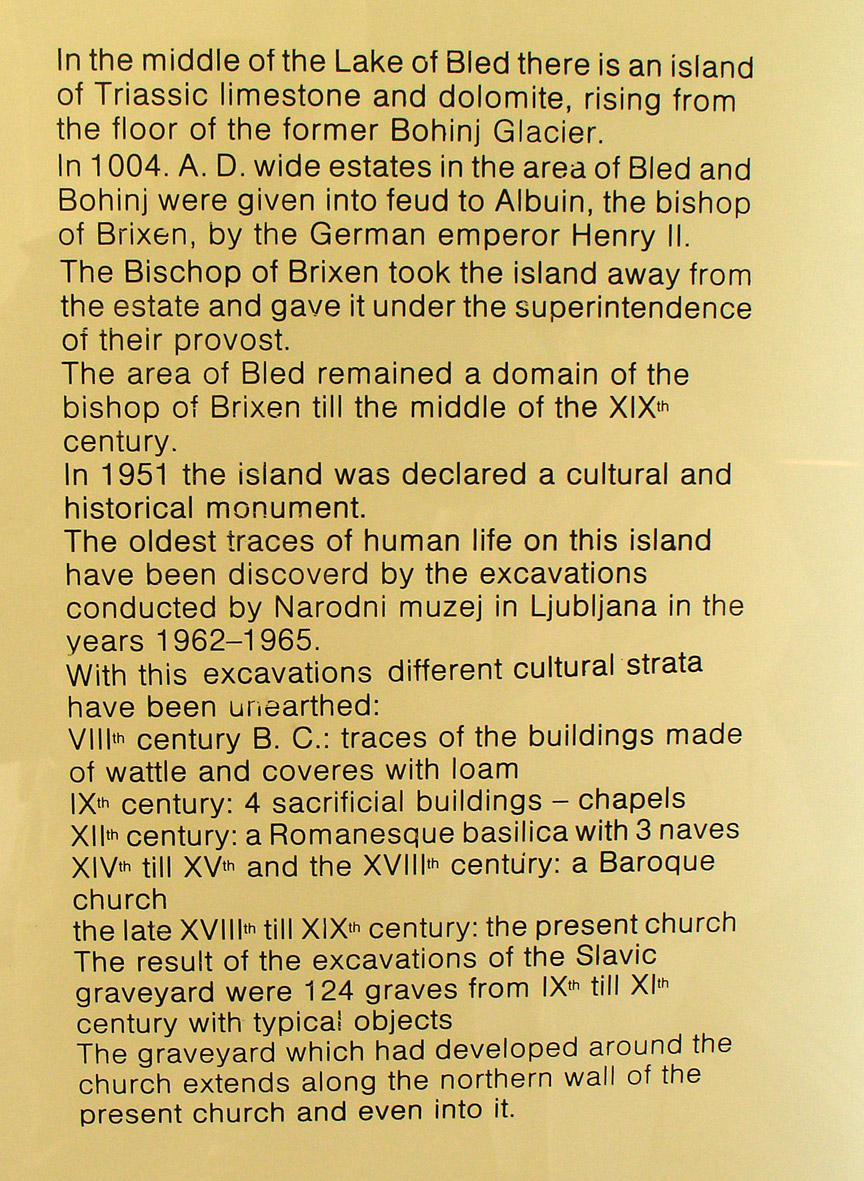
island history

in the church

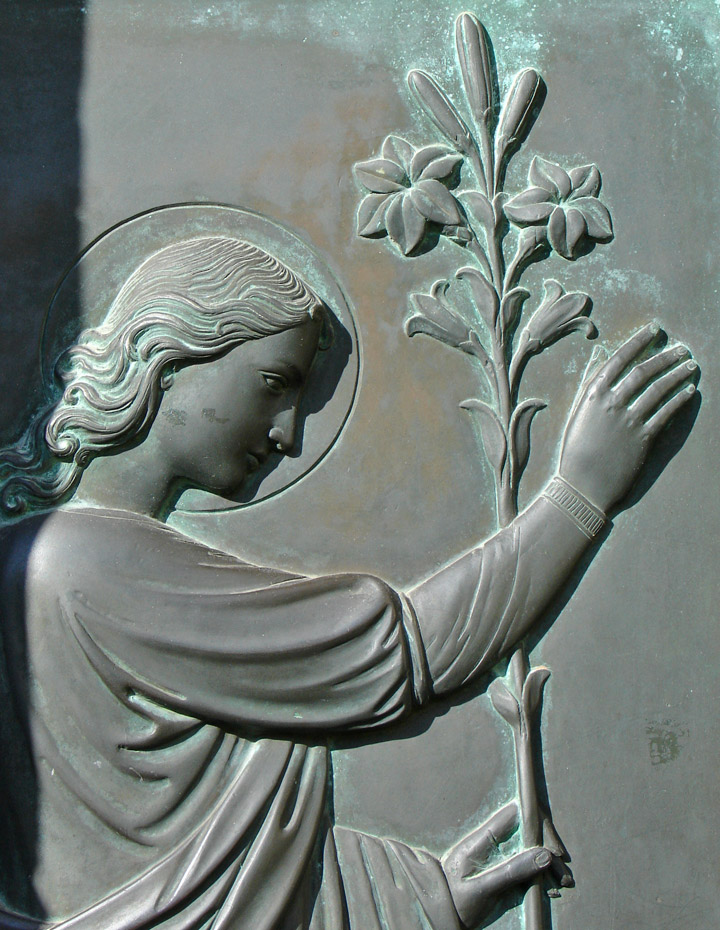
the modern metal church doors
The church was saved from destruction by the fact it financially supported a primary school which was one of the first in Slovenia. The Emperor Joseph II hated churches and monasteries to the extent that he had many closed or demolished until the Pope himself asked him to desist. In 1809 Bled fell under French control. Due to lack of financial resources the French soon began to take hay from the farmers and also removed the bells from the island, apart from the wishing bell.
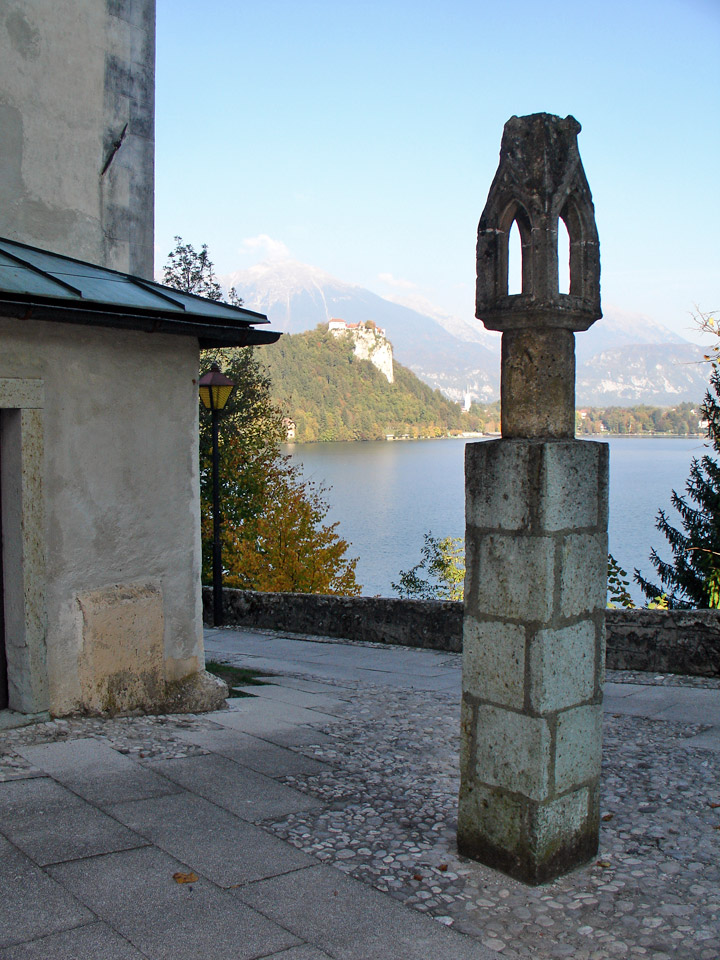
looking toward Bled castle
Nativity Exhibit
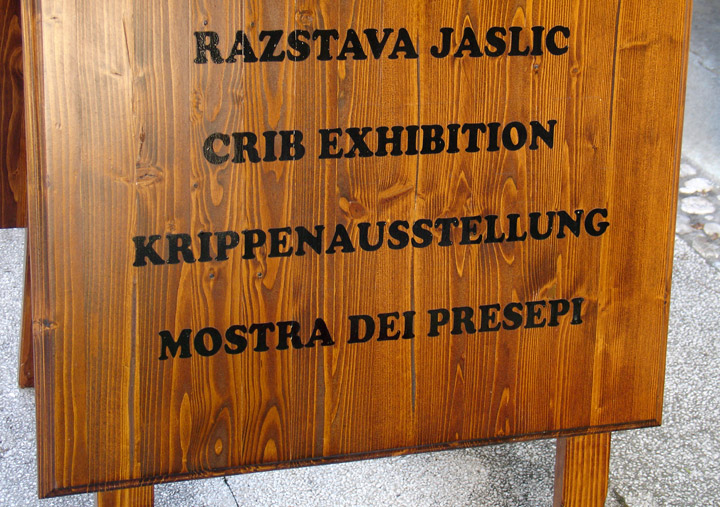
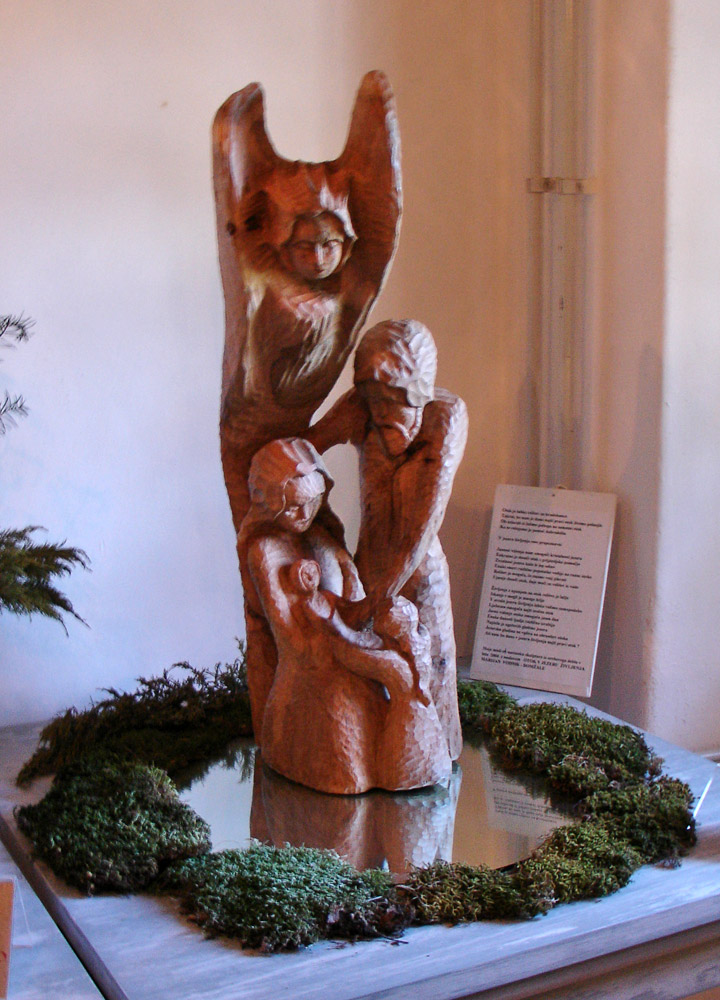
Nativity carving
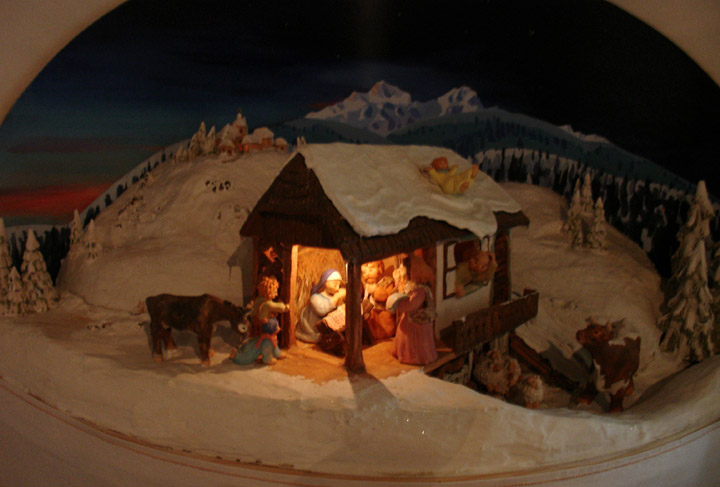
lighted Nativity scene
Getting to the island by boat
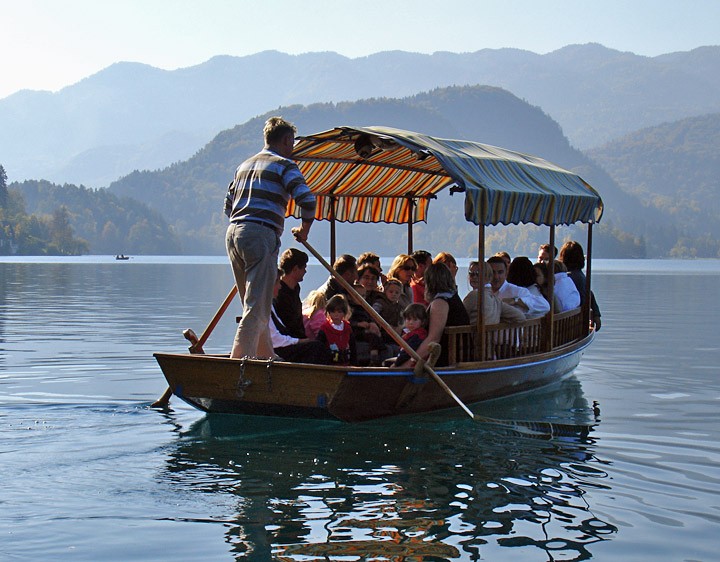
tourists taken to the island by an oarsman
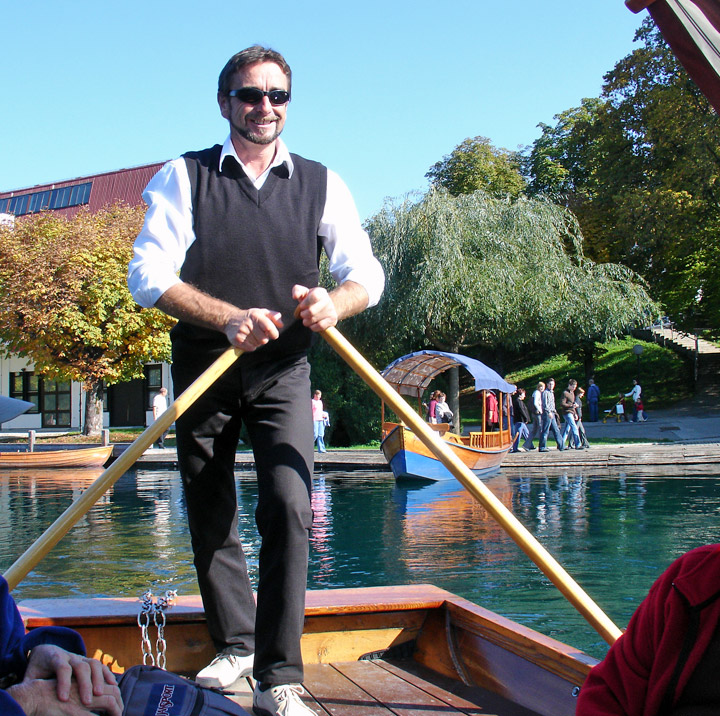
my oarsman

leaving the town of Lake Bled


nearing the island
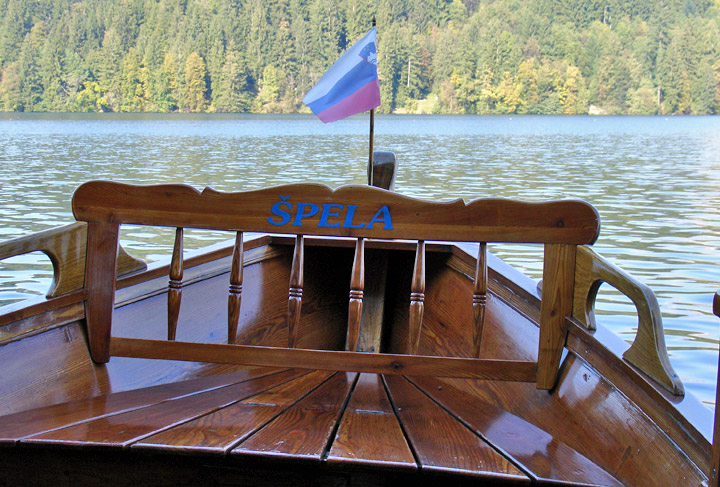
name of my boat going

docked at the island

name of my boat returning